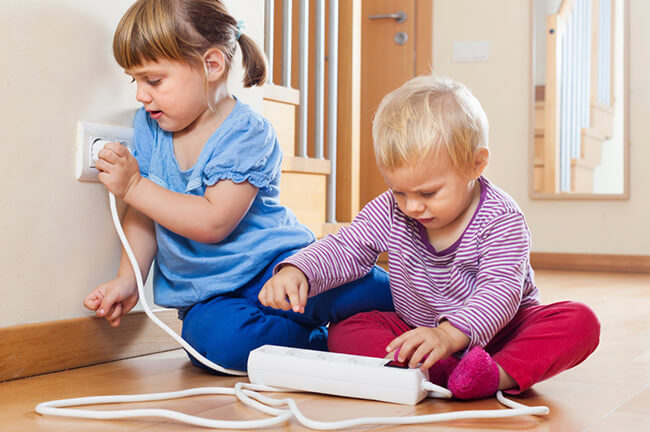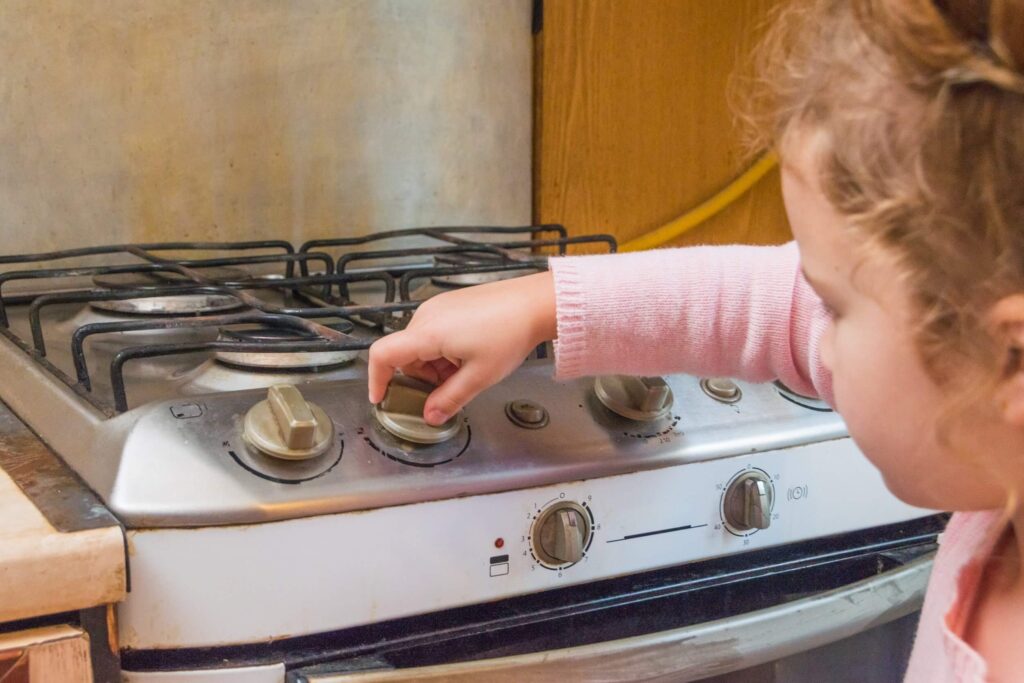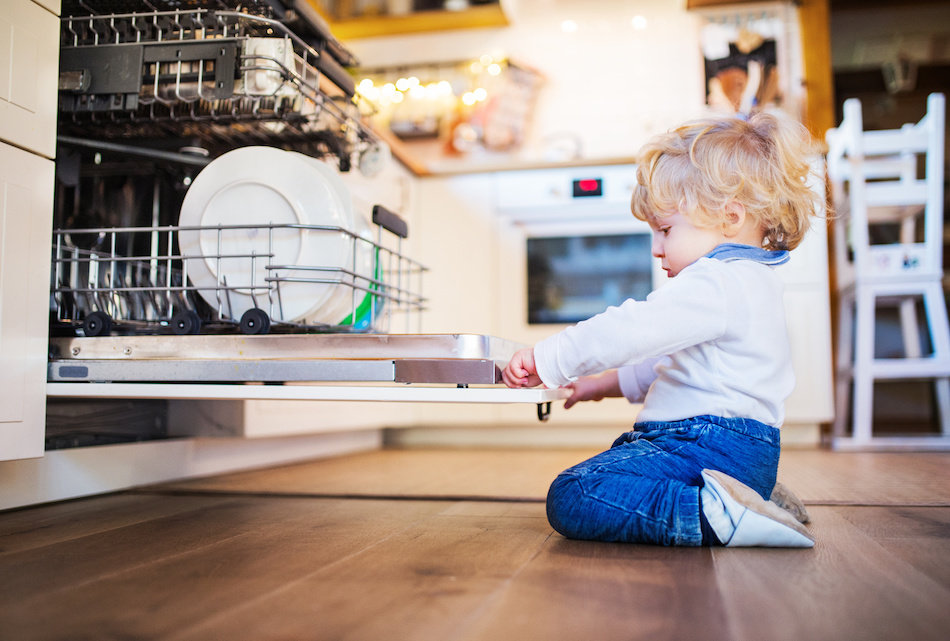
Childproofing your home is a vital step in ensuring the safety of your little ones. When it comes to childproofing appliances, you must leave no stone unturned. Children are naturally curious, and household appliances can pose serious risks if not properly secured. In this comprehensive guide, we will explore everything you need to know about childproofing appliances, from kitchen gadgets to electrical devices, in detail.
Why Childproof Appliances?
Before we dive into the specifics of childproofing appliances, it’s essential to understand the gravity of the situation. Why is childproofing so crucial? The answer is crystal clear – the safety of your children is paramount. Kids have an innate ability to explore, touch, and engage with their surroundings, and household appliances, with their buttons, cords, and enticing features, can be particularly alluring. Here are the primary reasons why childproofing appliances is non-negotiable:
- Preventing Accidents: Childproofing significantly reduces the risk of accidental injuries, some of which can be severe or even fatal. From hot stovetops to electrical shock hazards, appliances can pose numerous dangers.
- Peace of Mind: Childproofing provides parents with the peace of mind that their little ones are protected. Knowing that you’ve taken steps to secure your home against potential dangers can alleviate parental stress and anxiety.
- Minimizing Damage: Childproofing not only safeguards your children but also protects your appliances. Kids tampering with appliances can lead to costly repairs or replacements. Ensuring their safety means safeguarding your investments.
Now, let’s delve into the various appliances and explore the detailed safety measures to keep your kids safe and sound.
Childproofing Kitchen Appliances

The kitchen is a bustling hub of activity, and it’s essential to secure appliances that children can potentially interact with.
Stove and Oven
The stove and oven are central to the kitchen, and they can be enticing for children who want to mimic their parents’ cooking activities. Here’s how you can childproof them effectively:
- Stove Knob Covers: Stove knob covers are an excellent tool to prevent children from accidentally turning on the burners. These covers fit over the stove’s control knobs, making them inaccessible to little hands.
- Oven Locks: Oven locks are crucial for keeping the oven door securely closed. They prevent kids from opening the oven and potentially burning themselves on the hot racks or interior.
- Safety Gates: If your kitchen allows it, consider installing safety gates to keep your child out of the kitchen while you’re cooking. This is an extra layer of protection to ensure they don’t enter the kitchen unsupervised.
Refrigerator and Freezer
The refrigerator and freezer are like treasure chests for kids, filled with colorful food items and intriguing contents. Prevent your child from accessing these appliances with the following measures:
- Appliance Locks: Install locks on the refrigerator and freezer doors to keep them securely closed. These locks typically come with adhesive backing and are easy to install.
- Secure Magnets: Move refrigerator magnets and other enticing items to the top of the fridge, where they are out of reach for children.
- Food Storage: Store potentially hazardous or tempting items, such as raw meat, on higher shelves where children can’t access them.
Dishwasher
Dishwashers can be fascinating with their moving racks and soap compartments. However, they can also pose a danger to inquisitive children. Here’s how to childproof your dishwasher:
- Latch Locks: Install latch locks to keep the dishwasher door securely closed. These locks will prevent your child from opening the dishwasher and potentially handling sharp or dangerous objects.
- Empty Detergent: After each use, ensure that you empty the detergent tray in the dishwasher. This prevents your child from accessing and potentially ingesting harmful dishwasher detergents.
- Childproof Utensils: If you store utensils in the dishwasher, ensure they are childproof. This may include using utensil organizers with childproof latches or storing utensils in a locked cabinet.
Childproofing Electrical Appliances

Electrical appliances are prevalent in most households and can pose significant risks to children. Here’s how to secure them:
Television
Televisions are a common source of entertainment, but they can be dangerous if not adequately secured. Take these precautions:
- Mount It: Secure your TV to the wall using an appropriate wall mount. Wall mounting prevents the TV from tipping over if a child attempts to climb on it or pulls on the TV stand.
- Hide Cords: Conceal cords behind furniture or use cord covers to prevent tripping hazards. Cord covers are especially useful if your TV stand has multiple wires running to it.
- Remote Control Locks: Keep remote controls and other small gadgets out of reach when not in use. This prevents children from changing channels or adjusting settings without supervision.
Computer and Home Office Appliances
In today’s tech-savvy world, computers and office equipment are common in many homes. Here’s how to childproof these devices:
- Cord Control: Use cord organizers or cable management systems to bundle and hide cords. This not only reduces clutter but also eliminates potential tripping hazards.
- Screen Guards: Apply screen guards to computer monitors or laptops. These guards protect the screen from damage and discourage children from tampering with the equipment.
- Password Protection: If your computer or devices have sensitive or potentially harmful content, ensure that they are password-protected. This limits access and prevents children from accidentally or intentionally causing damage.
Washing Machine and Dryer
Laundry day can be an exciting time for children who want to play hide and seek in the washing machine or dryer. Here’s how to childproof these appliances:
- Latch Locks: Install latch locks on the doors of your washing machine and dryer. These locks prevent children from opening the doors and climbing inside.
- Childproof Laundry Room: Keep the laundry room door closed when not in use. A closed door serves as a barrier, preventing children from entering the laundry area.
- Empty Pockets: Always check and empty pockets in clothing items before placing them in the washer or dryer. Small objects left in pockets can be a choking hazard if children discover them.
Childproofing Bathroom Appliances
Bathrooms contain various appliances and gadgets that can be alluring to children. Here’s how to childproof these bathroom appliances:
Hairdryer and Straightener
Hairdryers and straighteners can be intriguing due to their appearance and the noise they make. Keep them away from curious hands:
- High Shelving: Store hairdryers and straighteners on high shelves or in a locked cabinet. This keeps them out of reach and prevents burns or electrical accidents.
- Unplug and Cool Down: After using these appliances, unplug them and allow them to cool down before storing them away. This prevents burns from hot surfaces.
- Teach Safety: As children grow, teach them about the potential dangers of these devices and how to use them responsibly. Education is a crucial aspect of childproofing.
Electric Toothbrush
Even seemingly mundane items like electric toothbrushes can pose a threat. Ensure safety with these methods:
- Wall Mounts: Use wall mounts to keep electric toothbrushes out of reach. Mounting them on the wall prevents children from handling them.
- Replaceable Heads: Keep extra toothbrush heads in a locked cabinet or high shelf. Children might be tempted to play with them, and ingesting small parts can be dangerous.
- Supervision: When it’s time for your child to brush their teeth, provide supervision, especially if they are using an electric toothbrush. This ensures they use it correctly and safely.
Additional Safety Measures
Childproofing isn’t just about securing specific appliances; it’s also about creating a safe environment throughout your home. Here are some additional safety measures to consider:
- Outlet Covers: Cover all electrical outlets with childproof outlet covers to prevent electrical shocks.
- Cabinet Locks: Use locks on cabinets and drawers where hazardous items or small objects are stored. This prevents children from accessing potentially dangerous materials.
- Corner Protectors: Install corner protectors on sharp furniture edges to prevent injuries in case of accidental collisions.
- Safety Gates: Use safety gates to block off areas that pose risks, such as staircases or rooms with hazardous materials.
- Anchoring Furniture: Secure heavy furniture, like bookshelves and dressers, to the wall to prevent tipping. Children may try to climb on furniture, leading to potential accidents.
- Carbon Monoxide and Smoke Detectors: Ensure that carbon monoxide and smoke detectors are in working order. Regularly replace batteries and perform maintenance to keep your family safe from potential hazards.
Now that we’ve covered all these safety measures in detail, your home should be a fortress of childproofing excellence. Remember, it’s not just about safeguarding your appliances but also about teaching your children about the potential dangers and how to stay safe. Education and awareness are key components of successful childproofing.
Final Words
In conclusion, childproofing your appliances and home is about creating a secure and nurturing environment for your children to thrive in. It’s like putting your best foot forward to ensure their safety. So, take the bull by the horns, get started with childproofing, and let your home be a place where your children can grow and explore safely. With these detailed safety measures in place, you’ll be as happy as a clam, knowing your family is secure. Happy childproofing!
Childproofing Appliances: Frequently Asked Questions (FAQ)
Childproofing your home and appliances is a crucial step in ensuring the safety of your little ones. Here, we answer some of the most common questions regarding childproofing appliances to help you create a secure environment for your family.
1. Why is childproofing appliances important?
Childproofing appliances is essential because it helps prevent accidents and injuries, minimizes damage to appliances, and provides peace of mind to parents. Children are naturally curious and can be drawn to household appliances, which can be hazardous if not secured properly.
2. What are the primary safety measures for childproofing kitchen appliances?
For kitchen appliances like stoves, ovens, refrigerators, and dishwashers, you can take the following safety measures:
- Use stove knob covers to prevent accidental burner activation.
- Install oven locks to keep the oven door securely closed.
- Consider safety gates to keep your child out of the kitchen while cooking.
- Apply appliance locks to keep refrigerator and freezer doors closed.
- Store tempting items like magnets on the top of the fridge.
- Place potentially hazardous items on higher shelves.
- Use latch locks to secure dishwasher doors.
- Empty the dishwasher detergent tray after each use.
- Ensure utensils in the dishwasher are childproof.
3. How can I childproof electrical appliances like TVs and computers?
To childproof electrical appliances, follow these steps:
- Secure your TV to the wall with a wall mount.
- Conceal cords using cord organizers or covers.
- Keep remote controls and small gadgets out of reach.
- Use cord control systems for computers and home office equipment.
- Apply screen guards to protect computer screens.
- Password-protect devices with sensitive content.
- Install latch locks on the doors of washing machines and dryers.
- Keep the laundry room door closed when not in use.
- Always check and empty pockets in clothing items before washing.
4. What safety measures should I take for bathroom appliances like hairdryers and electric toothbrushes?
To childproof bathroom appliances, consider the following:
- Store hairdryers and straighteners on high shelves or in locked cabinets.
- Unplug and allow these appliances to cool down before storing.
- Teach children about the potential dangers of these devices.
- Use wall mounts for electric toothbrushes.
- Keep extra toothbrush heads in a locked cabinet.
- Provide supervision, especially for younger children.
5. What additional safety measures should I consider for childproofing my home?
Apart from appliance-specific safety measures, consider these additional precautions:
- Use outlet covers to prevent electrical shocks.
- Install cabinet locks on cabinets and drawers with hazardous items.
- Apply corner protectors to sharp furniture edges.
- Use safety gates to block off areas that pose risks.
- Anchor heavy furniture to the wall to prevent tipping.
- Ensure carbon monoxide and smoke detectors are in working order, and regularly replace batteries.
6. When should I start childproofing appliances and my home?
Childproofing should begin before your child becomes mobile, as they can start exploring their surroundings sooner than you might expect. Ideally, start childproofing during pregnancy or a few months before your child begins to crawl or walk.
7. Are there professional childproofing services available?
Yes, professional childproofing services are available and can be particularly helpful if you’re unsure about the best childproofing measures for your home. These experts can assess your specific needs and install safety devices for you.
8. Can childproofing measures be removed when no longer needed?
Many childproofing products are designed to be easily removable without damaging appliances or furniture. However, it’s essential to keep the manufacturer’s instructions in mind, as some adhesives or fasteners may leave residue. Additionally, as your child grows and matures, you may gradually remove some childproofing measures when they are no longer necessary.
9. How often should I review and update my childproofing measures?
Regularly review and update your childproofing measures as your child grows and develops. What’s safe for a crawling baby might not be sufficient for a toddler or an older child. Periodically assess your home’s childproofing needs and make adjustments accordingly.
10. Is education about appliance safety important for children?
Absolutely! Education about appliance safety is crucial. Teach your children about the potential dangers of appliances, why they should not touch certain items, and how to use them responsibly. Education empowers your child to make safe choices and be aware of potential hazards.
